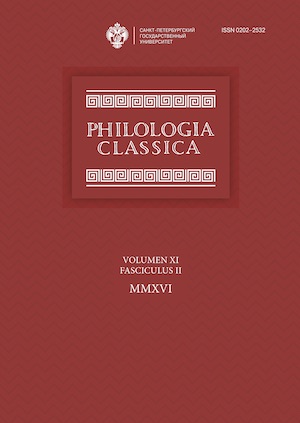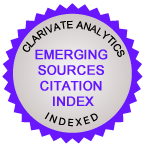Der imaginäre Bühnenraum in Senecas Hercules Furens
DOI:
https://doi.org/10.21638/11701/spbu20.2016.205Аннотация
Целью данной статьи является анализ построения пространства в трагедии Сенеки Безумный Геркулес. Статья демонстрирует, что трагедия базируется на структурной аналогии между тремя концептуальными областями — 1) миром сверхъестественной мифологии, который не может быть правдоподобно показан на сцене и поэтому детально описывается в дескриптивных пассажах, 2) визуально воспринимаемым миром сценического действия и 3) абстрактно мыслимым миром ‘человеческой жизни’. Эти три области сливаются в единое воображаемое пространство, в рамках которого философская мысль оказывается не столько сформулированной, сколько наглядно инсценированной, подвергая зрителя /читателя эмоциональному воздействию, потенциально способствующему его внутренней трансформации. Таким образом, помимо интерпретации трагедии Безумный Геркулес данная статья предлагает новый общий подход к роли философии в драмах Сенеки.
Ключевые слова:
Сенека, Безумный Геркулес, трагедия, философия
Скачивания
Библиографические ссылки
Загрузки
Опубликован
Как цитировать
Выпуск
Раздел
Лицензия
Статьи журнала «Philologia Classica» находятся в открытом доступе и распространяются в соответствии с условиями Лицензионного Договора с Санкт-Петербургским государственным университетом, который бесплатно предоставляет авторам неограниченное распространение и самостоятельное архивирование.






